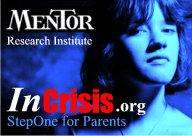By: Michael Conner, Psy.D
Intervention programs, schools and therapeutic communities are a growing, viable and effective solution for troubled youth. Parents are no longer limited to traditional and often inadequate interventions such as residential treatment, day treatment and psychiatric hospitalization. The problems that can be effectively addressed include substance abuse, developmental delays, psychological disorders, antisocial behavior and failure of a child to achieve their potential. The success stories associated with these new interventions are supported by a growing body of research. There is no real consensus on how to categorize programs for youth, but there are distinctions between programs that are important. Some minimal understanding is necessary in order to understand and avoid programs that profit from failure. The most common program options available to parents and referring professionals include,
School Programs
Transition Programs
Treatment Programs
Methods By Which Programs Profit From Failure There is no clear history or reason why there are programs that profit from failure. What seems clear is how the structure, policies, referral practices and the contracts found in these programs are exploitive. One parent commented, "I was desperate and exhausted and it took all my strength to send my daughter into the darkness. They make a lot of money when children run away from their program and we paid for it. These people told me that they cared and would help her." In some cases, the marketing practices and behavior within these programs are unprofessional, unethical and border on criminal. Programs profit from their failures in four ways.
Describing the concept of "profiting from failure" in youth intervention is a complex undertaking. An operational description has not been established. In absence of a useful definition, the following examples are presented to illustrate the problem. These examples are based on a collection of real events that illustrate how a few programs profit from their failure. (The words he and she are used interchangeably in these stories.) Example 1. The School Program Fails and then Keeps Deposits and the Balance of Tuition Janis is 15 years old. She was defiant, sexually active, refusing to stay home, drinking and using drugs. Her father placed her in a drugs & alcohol treatment program. The father felt that this program was not comprehensive and even the program admitted that the risk of relapse was almost certain if she came home. She was then referred to a wilderness program by an educational consultant after it was determined that a follow-up program was necessary. She successfully completed the wilderness program and accepted responsibility for her behavior. She agreed with her father's decision that she would be enrolled in a boarding school that worked primarily with children recovering from substance abuse. The program admitted her knowing her entire history. After about 6 months in the program her depression deepened. Her medications were changed with some improvement. She continued to attend her individual and group "counseling". The program maintained that it did not provide therapy and that it provided counseling for school and recovery issues. Janis asked to be transferred to an acute care treatment program associated with the program and she told her counselor that the school program was not helping. The program told the father that they could work with her and that a transfer was not necessary. Her depression deepened to the point that she was acutely suicidal. That crisis then lifted slightly and she claimed she was no longer suicidal. Her counselor was not licensed and was being supervised by someone outside of the program. Within a short period of time a group of students in the school attempted suicide. They were all referred to another program. This had a profound impact on the remaining students. Janis was involved in a counseling session where the staff confronted and investigated the suicide attempts. This had a traumatic impact. Some time later Janis was punished because she did not report several students who were smoking. She had no significant improvement other than her outward attitude to teachers. Her behavior in the program clearly began to slide. She was brought before a group of her peers serving on a quasi-disciplinary committee who told her that she did not belong in their school if she was going to act that way. Her punishment was social isolation so that she could think about her behavior. While on social isolation she attempted to watch television with other students on a weekend night. She was lonely and depressed. A staff person confronted her and told her needed to go back to her room. She was observed by others to have been abrasive. That night she ran away. She left without her belongings or her money. It was snowing. That staff interaction combined with a humiliating peer interaction, severe depression and isolation appeared to be the trigger. The school made an initial effort to search for her but they were not cooperative with the father and professionals hired to search for her. They avoided revealing the conditions that helped describe her state of mind. During the search the parents discovered from law enforcement that an average of 3 children ran from the program each month. The school initially led the father and educational consultant to believe she could return to the school depending on her condition. Without reason, the father was told that Janis could not return to the program and that she would not be admitted into their acute program if she was found. After nearly a week she eventually contacted her father. The program kept her tuition and kept her deposit for the next term. The program refused to hear an appeal from the father and stated that his daughter "discharged herself" and "broke the contract" when she ran away. They refused mediation on the issue of re-admission even if she went through another intervention program and underwent a full evaluation. It was later determined that this program generated close to $300,000 in profit each year from students who run away. Runaways also created openings for people on the program's waiting list. Several program staff privately expressed their disappointment in the program's behavior and the number of students who actually ran away. Staff reported that they were told to not discuss any matters with parents regarding students who run away. The program went even further. They refused to release the students transcript until the parents paid the balance due on the final term that she was denied an opportunity to attend. Example 2. The Wilderness Program Admits Children with Problems Beyond the Scope of the Program that Require Extending the Program Rob was 14 years old. He was admitted to a wilderness program after being referred by an educational consultant. The consultant had visited the program the previous year and spent one day touring the office, meeting with staff and visiting the field program. The program subsequently referred parents to the consultant who referred parents back to the program. The relationship between the consultant and the program grew as did the consultant's practice. This is an example of a practice where programs establish special relationships with consultants based on an implicit financial incentive to refer back and forth to each other. The consultant had no particular qualification other than visiting a large number of programs and taking a couple of courses in related topics. He was also not licensed nor did he have any education or training associated with counseling, psychology or education. Upon the advise of the consultant, the parents contacted the program's admission staff. They answered the parent's questions, forwarded an application to the parents and assured the parents that their child was appropriate for the program. Of course the admission staff had no particular qualifications other than a background in marketing and their previous marketing experience in another program. The parents then answered the screening questions. This was to be a three week intervention program. By the second week in the program the student was not progressing. A review of the child's records showed that the child was developmentally delayed and not mature enough for the emotional demands of her group which consisted of children who were three years older. The child's response to the program was essentially "non-cooperation" even when it had no incentive she felt he could achieve other than the feelings that he was in control. What the parents did not know was that the program was having financial problems due to financial mismanagement. The program recommended that the child be upgraded to the 60 day program instead of sending the child to a more appropriate program. The child continued in the program without improvement. He was then discharged to his parents after her extended program failed. The program recommended that the child be enrolled in their boarding school because the child was not ready to come home. The parents did not have the money to do this. The last 30 days in the program would have paid for most of the boarding school. This child should not have been admitted to this program to begin with. Recommendations The practice of profiting from failure seems to be growing so much that consumers, referring professionals and some industry leaders are commenting that youth programs are becoming a "rip-off industry." In many cases a program will profit if they fail your child or your child has problems beyond the resources of a program. Consumers and professionals should avoid programs that have contracts and policies that create leverage in favor of a program profiting from their own failure. Here are some warning sign and steps you can take to protect yourself.
Copyright 2002 to 2011, Michael G. Conner |


